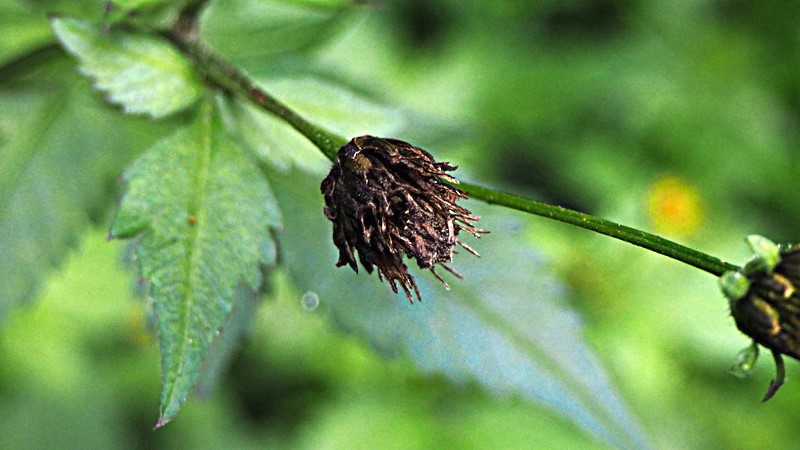

Crop protection: Scientists have improved the application of atrazine against weeds such as black jack (Bidens pilosa L.) (image: iNaturalist)
Often treated as waste from the pulp and paper industry, lignin, a polymer responsible for the rigidity of plant cell walls, has increased the stability and effectiveness of herbicide nanoparticles.
Often treated as waste from the pulp and paper industry, lignin, a polymer responsible for the rigidity of plant cell walls, has increased the stability and effectiveness of herbicide nanoparticles.

Crop protection: Scientists have improved the application of atrazine against weeds such as black jack (Bidens pilosa L.) (image: iNaturalist)
By Thais Szegö | Agência FAPESP – A study published in the journal ACS Sustainable Chemistry and Engineering and featured on its cover showed that a fraction obtained from lignin, an organic polymer responsible for the rigidity of plant cell walls, was able to improve the performance of nanoparticles with herbicide. The study was conducted by researchers from three research institutions in the state of São Paulo, Brazil: São Paulo State University (UNESP), the State University of Campinas (UNICAMP), and the Federal University of São Carlos (UFSCar).
"Lignin has antioxidant properties and is one of the main components of plant biomass, but it's still underutilized and often treated as waste from the pulp and paper industry. That's why our group sought more sustainable ways to add value to this abundant and renewable material," says Leonardo Fraceto, a professor at the Institute of Science and Technology at UNESP, Sorocaba campus. He is also the Innovation Coordinator at the Center for Research on Biodiversity and Climate Change (CBioClima) and at the National Institute of Science and Technology (INCTNanoAgro). The study was supported by FAPESP through four projects (23/06505-9, 24/01872-6, 24/14149-0, and 23/00335-4).
The substance was obtained from Eucalyptus urograndis, a hardwood tree, and was then subjected to a green process. This process used acetic acid as a solvent to obtain different fractions with distinct structural and chemical properties. Next, nanoparticles were produced using atrazine, an herbicide that combats weeds.
These nanoparticles underwent a series of physical, chemical, and thermal analyses to examine their structure and behavior. "We found that the different lignin fractions have very distinct properties. Some are richer in phenolic groups. Others have a higher molar mass or promote greater thermal stability. These differences directly impact the formation and performance of the nanoparticles," Fraceto explains.
Some fractions are more effective at protecting polymeric materials (composed of macromolecules, proteins, and cellulose, for example) from ultraviolet ray-induced degradation, while others act as stabilizers in substance release systems. These results demonstrate that lignin is not a single, uniform waste product but rather a material that can be customized for different applications.
According to Fraceto, this finding is significant because, although using lignin as a surfactant is promising for the efficient distribution of active ingredients in agrochemical formulations, several challenges must be overcome. One major problem is the variability in its structure, which can affect its consistency and performance as a stabilizing agent.
In the case of atrazine nanoparticles, using the lignin fraction increased the stability and efficiency of herbicide release. Using specific lignin fractions was crucial to optimizing nanoparticle performance. The developed formulations effectively controlled black jack (Bidens pilosa L.) and green pigweed (Amaranthus viridis L.), demonstrating their potential for sustainable agricultural pest management.
"Not only were we able to use a simple, environmentally friendly process, but we also took advantage of an abundant byproduct in Brazil, opening up possibilities for the bioeconomy," Fraceto celebrates. "This type of study connects materials science, sustainability, and technological innovation, bringing academia closer to solutions for current challenges, such as developing greener agricultural inputs."
The article "Lignin as a dual-function stabilizer for protecting PCL nanoparticles from photodegradation and enhancing atrazine delivery" can be read at https://pubs.acs.org/doi/10.1021/acssuschemeng.5c04472.
Republish
The Agency FAPESP licenses news via Creative Commons (CC-BY-NC-ND) so that they can be republished free of charge and in a simple way by other digital or printed vehicles. Agência FAPESP must be credited as the source of the content being republished and the name of the reporter (if any) must be attributed. Using the HMTL button below allows compliance with these rules, detailed in Digital Republishing Policy FAPESP.





